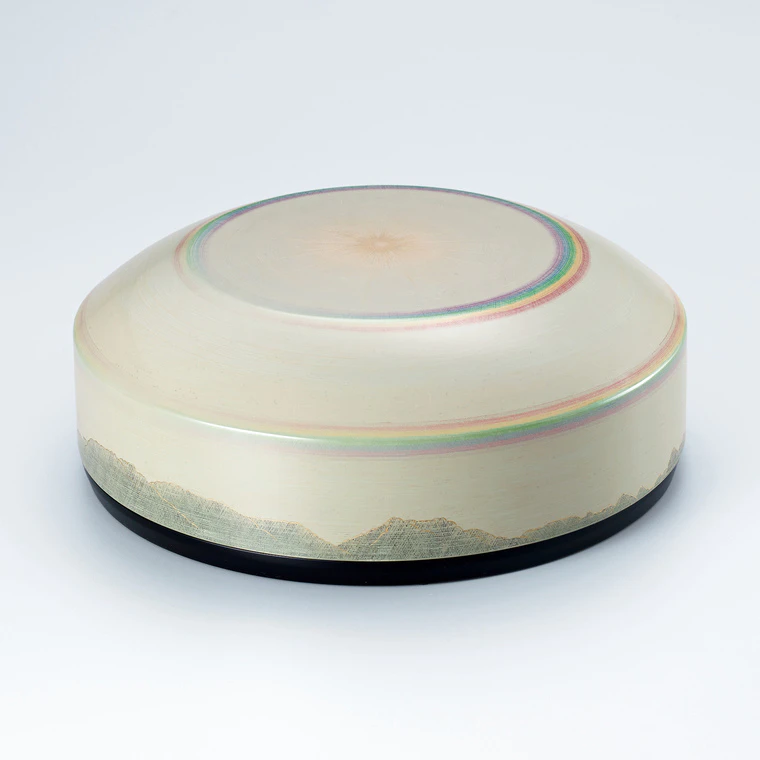Covered food box of rantai with design in zonsei. “Double rainbow”
H 10 / ø 27 cm,Year.2019Takashi Tsuji
1973 -- Lacquerware
- Price Range Please Inquire
- Awards at Japan Kōgei Assoc. Exhibitions : 11
Description
-
CategoryLacquerware
-
DimensionsH 10 / ø 27 cm
-
Year presented2019
-
RarityUnique
Techniques Used
Lacquered bamboo
Bamboo is ideal for weaving various forms. The bamboo is split into thin strips, peeled, and coated with multiple layers of lacquer. Pieces of basketry made from lacquered bamboo (known as rantai) are lightweight and durable.
Zonsei
In zonsei lacquerwork, the outlines of colored motifs are engraved to produce additional decorative effects. Typically, one of two techniques is used. In the first, the artisan applies the motifs in colored lacquer before using a carving tool called a zonsei ken to incise the outlines of the design or add decorative line engravings. In the second, the artisan creates motifs using the kinma technique, which are then outlined or engraved in the same fashion. Zonsei, like carved lacquer (chōshitsu) and kinma, is a technique associated primarily with Takamatsu in Kagawa prefecture.
Selected exhibitions
- The 66th Japan Traditional Kōgei Exhibition (2019)
- Selected

